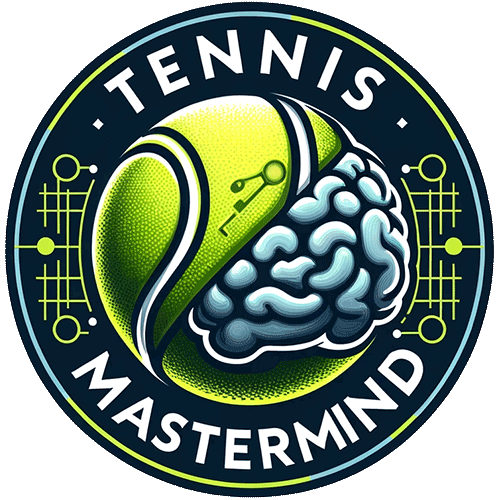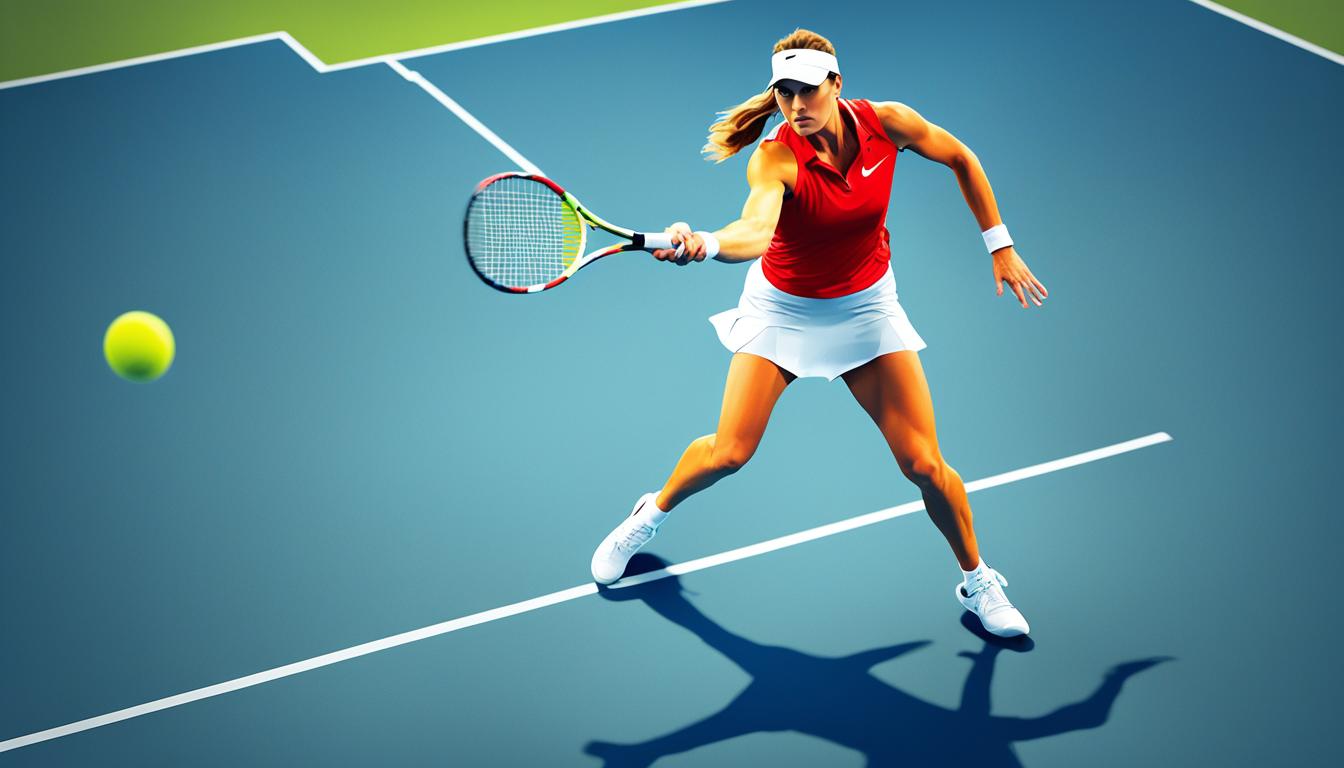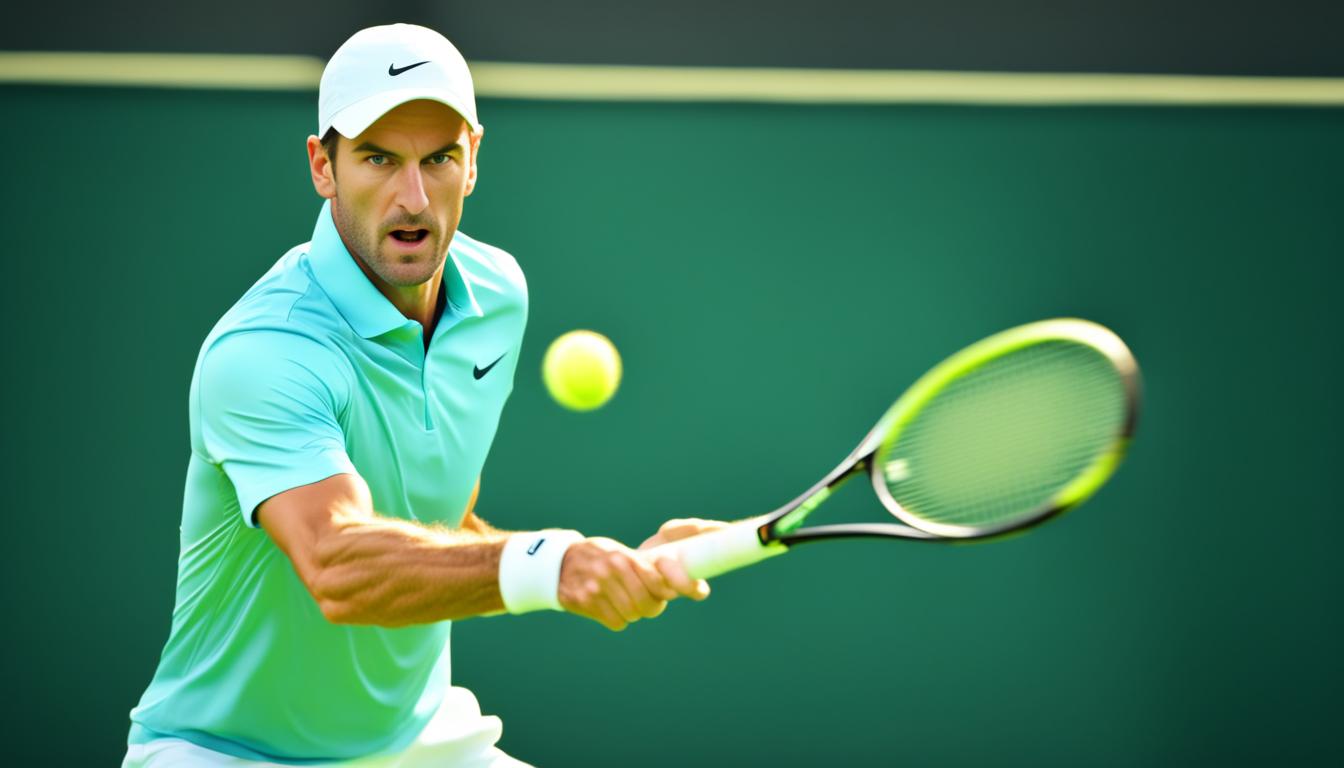Tennis footwork is a fundamental aspect of the game that can significantly impact your performance on the court. Whether you’re a club player or a junior player looking to improve your skills, dedicating time to footwork training can make a world of difference. By focusing on specific footwork patterns and drills, you can enhance your agility, efficiency, and overall game.
Improving your footwork in tennis is essential for various reasons. It allows you to reach balls more effectively, set up for shots, and recover quickly for the next shot. Additionally, good footwork enables you to maintain balance and control while executing strokes.
Are you ready to take your footwork to the next level? In this article, we will explore key techniques and exercises that will help you master tennis footwork and movement.
Key Takeaways:
- Invest time in off-court footwork training to enhance your on-court movement.
- The split step and wide base are crucial for quick reactions and balance.
- Take bigger steps and practice shadow strokes to improve speed and rhythm.
- Developing rhythm and adjusting to the speed of the ball are essential skills.
- Incorporate structured footwork drills into your training routine for targeted improvement.
The Importance of Split Step and Wide Base
When it comes to tennis footwork, two essential techniques that every player should master are the split step and maintaining a wide base. These fundamental skills play a crucial role in positioning yourself correctly on the court and improving your overall movement and agility.
The split step is a vital skill that allows players to react quickly to their opponent’s shots. By starting the split step early and being in the air during contact, you can anticipate the direction of the ball and make the necessary adjustments to move efficiently. This technique helps you stay balanced and ready to make your next move, whether it’s a quick sprint or a slight adjustment of your positioning.
In addition to the split step, maintaining a wide and strong base is essential for stability and balance. A wide base provides a solid foundation from which to move and react to the ball effectively. By spreading your feet wider apart, you create a more stable platform, allowing you to generate power and change direction swiftly.
To develop these crucial footwork techniques, it is essential to incorporate specific tennis footwork drills and exercises into your training regimen. These drills can help improve your split step timing, agility, and balance, enabling you to move more efficiently on the court.
Remember, mastering the split step and maintaining a wide base are key components of successful footwork in tennis. These techniques will not only improve your movement and reaction time but also enhance your overall performance on the court.
Tennis Footwork Drills and Exercises
To help you develop your split step and wide base, here are a few tennis footwork drills and exercises to incorporate into your training routine:
- Split Step Drill: Practice the split step by jumping in the air and landing with your feet shoulder-width apart as your opponent makes contact with the ball.
- Sideways Shuffle Drill: Create a wide base by shuffling sideways from one side of the court to the other, focusing on maintaining a stable lower body position.
- Quick Direction Change Drill: Set up cones or markers in different locations on the court and practice changing direction quickly to reach each marker.
- Agility Ladder Drill: Use an agility ladder or create one with tape on the ground to improve your footwork speed and coordination.
By regularly incorporating these tennis footwork drills and exercises into your training, you can improve your split step timing, strengthen your base, and enhance your overall movement on the tennis court.
Next, we will explore the significance of taking bigger steps and practicing shadow strokes to further enhance your tennis footwork and movement.
Taking Bigger Steps and Practicing Shadow Strokes
Taking bigger steps after the split step is an effective way to cover more ground on the tennis court, improving your footspeed and saving valuable time during gameplay. By observing and studying top professionals like Djokovic, Federer, and Nadal, who incorporate big steps into their footwork strategies, you can learn how to move faster and enhance your groundstrokes and net play.
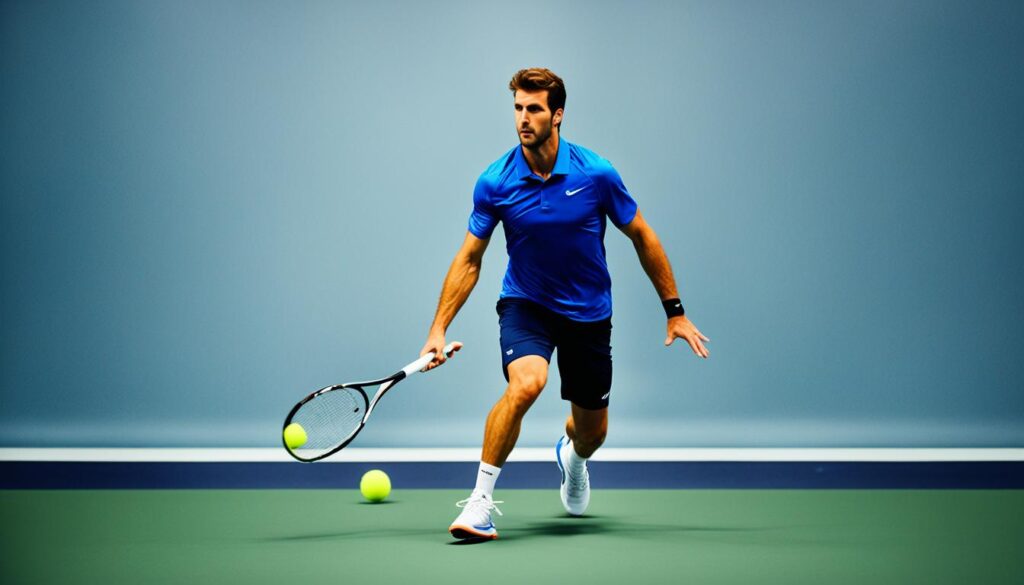
“The ability to take big steps allows me to quickly get into position and make powerful shots.” – Novak Djokovic
In addition to taking bigger steps, practicing shadow strokes can greatly benefit your footspeed and agility. Shadow strokes involve simulating shots and movement patterns on your own, without a partner. This exercise helps improve rhythm, timing, and anaerobic capacity, ultimately enhancing your overall movement on the court.
By incorporating specific tennis footwork exercises into your training routine, you can further develop your footspeed and agility. These exercises can include ladder drills, cone drills, agility ladder exercises, and quick feet drills. Regular practice of these agility-focused exercises will train your muscles to be more responsive, allowing you to react quickly to changing situations during a match.
Remember that consistency and commitment to footwork training are key to achieving optimal footspeed and agility in tennis. The more you practice and refine your footwork techniques, the better equipped you’ll be to navigate the court with speed and precision.
Developing Rhythm and Movement Techniques
Developing rhythm in our movement and adjusting to the speed of the ball are essential skills in tennis footwork. Moving quickly to reach fast balls and slowing down for slower ones can improve our timing and allow for better shot execution.
By working on footwork training and mastering fundamental movement techniques, we can enhance our overall footwork and movement on the court. Let’s explore some strategies to develop rhythm and improve our tennis movement patterns:
- Focus on Timing: Pay attention to the timing of your steps when moving to the ball. Anticipate the ball’s speed and adjust your footwork accordingly. Being able to synchronize your movement with the pace of the ball will help you maintain control and balance.
- Practice Tempo Changes: Incorporate drills that involve changing your movement tempo. For example, alternate between fast and slow footwork during practice sessions. This exercise challenges your adaptability and helps you become more comfortable with different ball speeds.
- Work on Quick Recovery: Improve your recovery time between shots by focusing on quick and efficient footwork. This allows you to reset your position for the next shot more effectively, enabling better shot selection and execution.
- Use Shadow Footwork: Incorporate shadow footwork drills into your training routine. Shadow footwork involves mimicking the movement patterns of a tennis rally without a ball. It helps develop muscle memory and coordination, enhancing your overall movement on the court.
Tennis footwork is a dance with the ball, where rhythm and timing play a vital role. By honing our movement techniques through dedicated footwork training, we can elevate our game and become more fluid and efficient players on the court.
Recommended Footwork Drills
| Drill | Description |
|---|---|
| Side Shuffle Drill | Move laterally from side to side, focusing on quick changes of direction. |
| Ladder Drills | Use an agility ladder to improve quickness, coordination, and footwork precision. |
| Speed Jumps | Perform rapid jumps in place, focusing on explosive power and quick reactions. |
| Crossover Steps | Practice crossing your feet over each other during lateral movements, improving agility. |
Adding these drills to your footwork training routine will help you develop the necessary rhythm and movement techniques to excel on the tennis court.
Tennis Footwork Drills and Movement Patterns
Improving your tennis footwork is essential for enhancing your overall performance on the court. By incorporating structured footwork drills and movement patterns into your training routine, you can target specific aspects of your footwork and make significant improvements. Let’s explore some of the most effective drills and patterns that can help you improve your footwork in tennis.
1. Prep Step
The prep step is a critical component of efficient footwork in tennis. It involves taking a small step back with your non-dominant leg as your opponent prepares to strike the ball. This helps you load your weight on your back foot, allowing for quick and explosive movement in any direction. Practicing the prep step regularly will help you anticipate your opponent’s shots and respond effectively.
2. Split Step
The split step is another fundamental footwork technique that will greatly enhance your agility and reaction time on the court. As your opponent strikes the ball, you should jump slightly off the ground, spreading your feet apart and landing with your weight evenly distributed. This split step helps you quickly change direction and move fluidly to reach the ball.
3. First Step
The first step is crucial for covering the initial distance to the ball. Practice taking explosive and well-timed first steps in different directions to improve your ability to reach wide or short balls. By focusing on the placement and timing of your first step, you can improve your court coverage and put yourself in a better position to execute your shots.
4. Crossover Step
The crossover step is an effective footwork pattern for moving laterally across the court. To execute this step, cross your trailing foot in front of your lead foot, allowing for quick lateral movement. This movement pattern is especially useful when you need to reach balls hit to your backhand side. Regular practice of crossover steps will refine your footwork and help you move smoothly and efficiently during rallies.
5. Transition Steps
Transition steps are involved in moving from baseline shots to net play or recovering quickly from an approach shot. These steps help you maintain balance and position yourself correctly while transitioning from the back of the court to the front. By focusing on quick and controlled transition steps, you can improve your footwork and seamlessly adapt to different situations during a match.
6. Multi-Directional Step
Multi-directional steps involve moving in multiple directions to anticipate your opponent’s shots. This footwork pattern is particularly important when defending against powerful and unpredictable shots. By practicing multi-directional steps, you can enhance your ability to react swiftly and move effectively in any direction, ensuring you are always in the best position to return the ball.
Remember, consistent practice of these tennis footwork drills and movement patterns is key to improving your footwork and movement on the court. Incorporate them into your training routine and watch as your agility and efficiency dramatically enhance your overall tennis game.
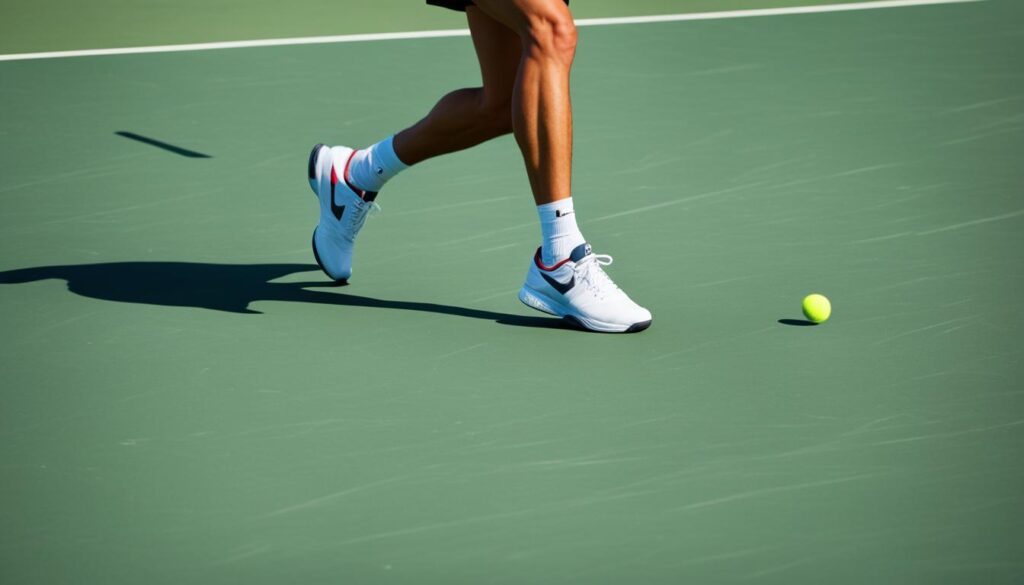
Conclusion
Mastering tennis footwork and movement is crucial for success in the game. By focusing on key elements such as split steps, wide bases, bigger steps, shadow strokes, rhythm, and specific footwork drills, tennis players can enhance their agility, speed, and efficiency on the court. With regular practice and a commitment to footwork training, significant improvements can be made in overall performance.
Improving footwork in tennis requires dedication and perseverance. By incorporating footwork training into your regimen, you can fine-tune your movement patterns and enhance your ability to reach balls quickly and effectively. Tennis footwork drills, such as the prep step, split step, first step, crossover step, transition steps, and multi-directional step, target specific areas of footwork and help address any deficiencies.
Remember, improving footwork is not just about physicality, but it also enhances strategy and decision-making on the court. By mastering footwork techniques and movement patterns, players can position themselves optimally to execute shots, cover the court efficiently, and anticipate their opponent’s moves. Elevate your tennis skills by prioritizing footwork and movement in your training regime, and watch your game reach new heights.
